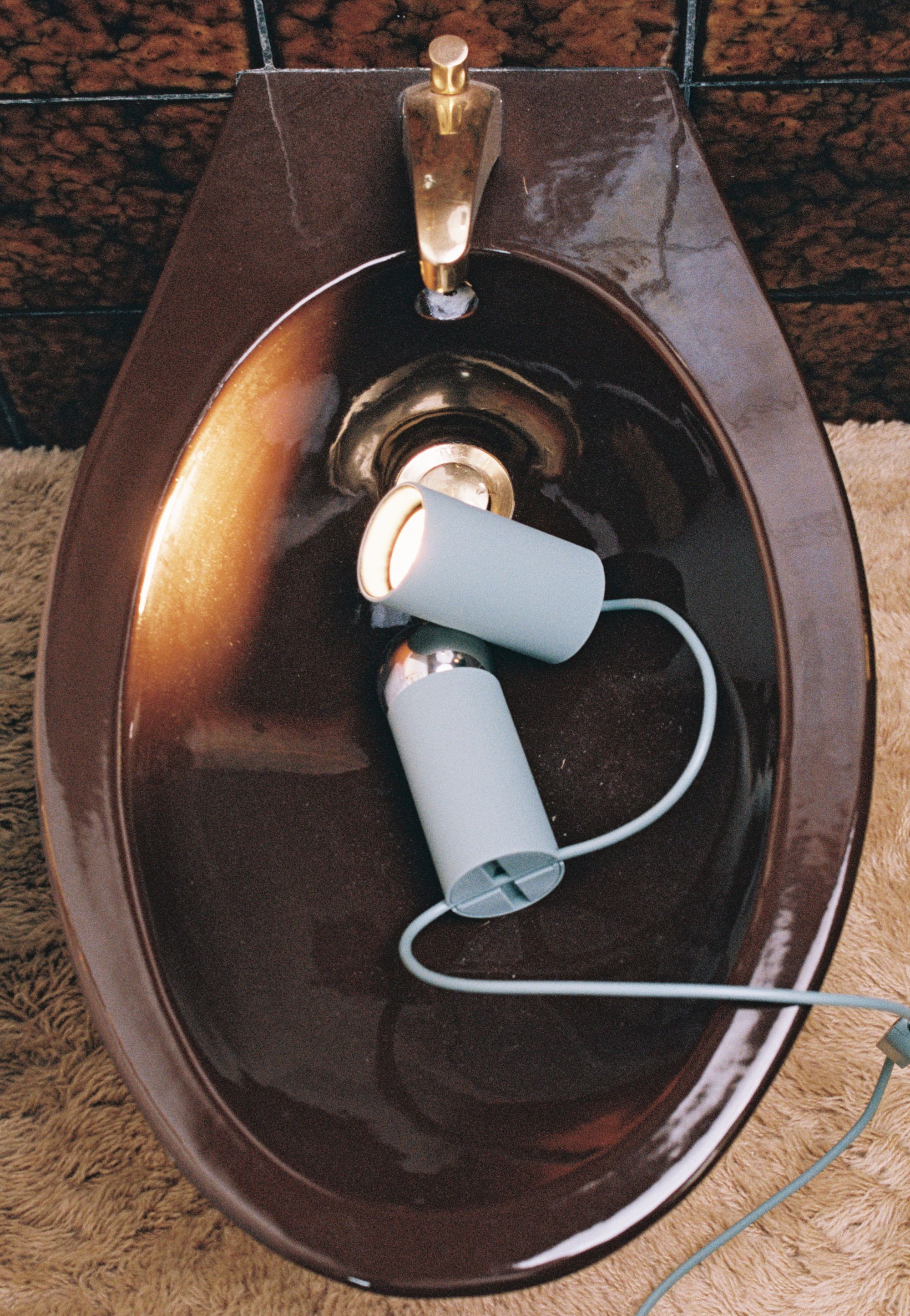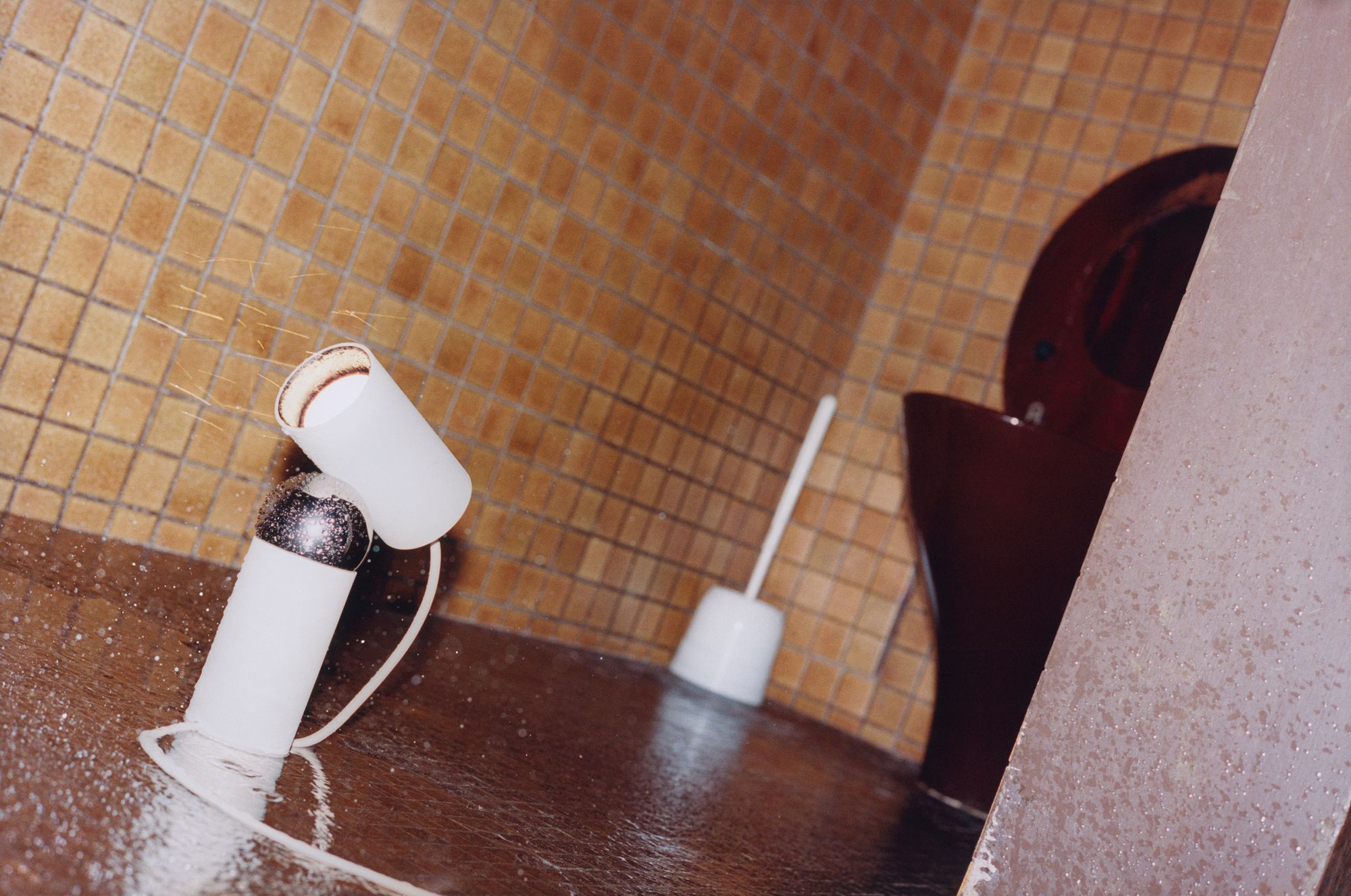
The Bilboquet light designed by Philippe Malouin for Flos. Photographed at Sheridan Coakley's house by Francesco Nazardo for PIN–UP

The Bilboquet light designed by Philippe Malouin for Flos. Photographed at Sheridan Coakley's house by Francesco Nazardo for PIN–UP
“It’s a very simple little light that does a lot,” says Philippe Malouin of Bilboquet, his first collaboration with Flos. “It’s many, many lights, both a task light and an ambient light, and I hope people get that. Movement and adaptability were essential to me — you’re meant to play with it to find the right light for you.” Functionality and durability drove every decision in Bilboquet’s design process, two years that the Canadian-born, London-based industrial designer describes as all-consuming. “It’s the only thing I was doing. I was in a kind of creative mental house, you know?”

The Bilboquet light designed by Philippe Malouin for Flos. Photographed at Sheridan Coakley's house by Francesco Nazardo for PIN–UP

The Bilboquet light designed by Philippe Malouin for Flos. Photographed at Sheridan Coakley's house by Francesco Nazardo for PIN–UP
Flos asked Malouin for a lamp suited to the lifestyles — and budgets — of people his age and younger. “Most people my age can't afford giant flats, living alone, or having a fully furnished sort of home,” he explains. “In small spaces, you tend to double up many things.” The result is deceptively simple. Named after the French ball and cup game it resembles, Bilboquet arrives in two parts, reflector and base, which mirror each other in size and form. A magnetic ball — in iron with a vapor deposition to prevent corrosion — screws into the base and functions as a flexible joint to the reflector, allowing the user to illuminate at any angle, directly or indirectly, depending on their needs and preferences.

The Bilboquet light designed by Philippe Malouin for Flos. Photographed at Sheridan Coakley's house by Francesco Nazardo for PIN–UP
Malouin recalls that, as a young designer, his first splurge purchase was a Flos Parentesi light, a model designed by Achille Castiglioni in 1972. “I remember I had friends who had a crazy discount, and when I got my first paycheck, I bought two Parentesi lights. All I had was a couch and those lights. And I loved that they were independent, and you could bounce the light off any wall.” When Flos approached him, Malouin was as nervous as he was thrilled. “It’s a huge confirmation as a designer,” he tells me, “but terrifying as well.” He is anxious to give credit to his collaborators on the Flos R&D team, specifically Andrea Gregis and Francesco Rodriquez, as well as the art directors who commissioned him, Paolo Brambilla and Fabio Calvi. “It’s important to mention them by name because I didn’t design this alone — I was working with an incredible team.”

The Bilboquet light designed by Philippe Malouin for Flos. Photographed at Sheridan Coakley's house by Francesco Nazardo for PIN–UP
Producing Bilboquet was a journey, a gradual evolution from the earliest prototypes, whose production costs were too high for the target market. Material sourcing played an essential part in getting the product right in terms of both pricing and sustainability. The magnetic joint, inspired by ball bearings that Malouin has employed in past designs, are rejected parts from the windmill industry, where, as the designer explains, stringent tolerances result in an excess of unusable parts. The base and reflector are manufactured using a unique polycarbonate derived from paper-production waste. “This makes it a truly sustainable object,” explains Flos’s Creative Director Barbara Corti, “manufactured without recourse to petroleum-derived materials.” Malouin is careful to acknowledge that the material is still plastic, even if not derived from oil, and distinguishes his approach from more disposable-recyclable attitudes to sustainable design — for him, longevity of use is primary in offsetting embodied carbon.

The Bilboquet light designed by Philippe Malouin for Flos. Photographed at Sheridan Coakley's house by Francesco Nazardo for PIN–UP

The Bilboquet light designed by Philippe Malouin for Flos. Photographed at Sheridan Coakley's house by Francesco Nazardo for PIN–UP
That’s why Bilboquet is entirely made from unadorned materials — neither painted nor coated — so scratches will not discolor it, and is intentionally low-tech and easy to disassemble. “This is meant to be durable; it’s meant to be taken apart, it’s meant to be repaired, and the bulb fitting is meant to be replaced,” Malouin explains. “It’s designed to stick around for a very long time.” Though aimed at first-time Flos customers, the compact, portable Bilboquet will accompany buyers throughout their lives from home to home and location to location. “Bilboquet reminds me of the late Andrea Branzi’s wonderful Animali Domestici,” muses Corti, referring to the late Italian designer’s furniture series from the mid-1980s, whose name translates into English as Pets. “A nomadic object that relates to the nomadic nature of our life home rather than that of the world.”

The Bilboquet light designed by Philippe Malouin for Flos. Photographed at Sheridan Coakley's house by Francesco Nazardo for PIN–UP

The Bilboquet light designed by Philippe Malouin for Flos. Photographed at Sheridan Coakley's house by Francesco Nazardo for PIN–UP
For PIN–UP, Bilboquet was photographed at the home of Sheridan Coakley, founder of design company SCP. Malouin explains that Coakley is “single-handedly” the pioneer of British design and his close friend and mentor. Admittedly, Coakley’s late-modernist brick-clad 1978 house in bucolic Hampshire, two hours south of London, is not exactly the space-limited urban dwelling Malouin had in mind when designing the lamp. “It’s a comfortable house — Modernist but not one of those minimalist temples,” he observes. “It’s authentic — the bathroom has kept its original tiles, and you can see that this house has been very well lived in. Many things have accumulated here. I couldn’t think of a better place for Bilboquet — it’s perfect.”